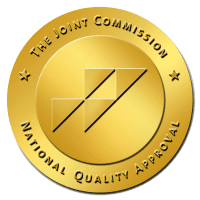The term “drunk” is often associated with parties and fun. But the reality of losing control can lead to negative or even fatal consequences.
When someone consumes alcohol, they may not feel the full effects for a while. Factors like age, body weight, and rate of consumption all affect the rate of intoxication.
Although the idea of getting drunk may sound exciting, a reduction in your physical and mental abilities can lead to risky behaviors and injury to yourself or others.
There are different stages of intoxication you should be aware of.
Here’s a look at alcohol use and the seven stages of intoxication.
The Initial Effects of Alcohol Use
The term “drunk” refers to the incapacitating effects of alcohol use and the effect it has on your brain and body. Some overt signs of intoxication include:
- Poor judgment
- Impaired decision making
- Lack of balance and coordination
- Vision changes
- Slurred speech
Learning about BAC, standard drinks, and the effects of heavy drinking helps you understand the stages of drunkenness and how you can avoid them.
What Is BAC?
A person’s intoxication level is measured by their blood alcohol concentration (BAC). This refers to the percentage of alcohol in the bloodstream.
In most areas, the legal limit is .08%. If you operate a vehicle or machinery when your BAC is over this limit, it’s against the law.
Tolerance levels vary. For some people, drinking two drinks in the span of an hour can put their BAC over the legal limit.
What Influences BAC Levels?
There are a variety of factors that influence BAC levels. These include:
- The amount of alcohol consumed
- Consumption rate
- Alcohol content
- Bodyweight
- Sex
- Age
- Metabolic rate
- health status
- Ethnicity
- Tolerance levels
- Stomach content
- Fat content of foods consumed
- Altitude
- Other medications
- Stress levels
- Hydration prior to drinking
- Sleep
What Is a Standard Drink?

By U.S. standards, a standard drink is 12 ounces of 5% alcohol by volume (ABV) beer, 1 ounce of 40% ABV spirits, or 5 ounces of 12% ABV wine. Spirits include rum, whiskey, vodka, etc.
Keep in mind that a drink served in a bar, at a restaurant, or by a friend may not align with these standard percentages for ABV.
What Is Heavy Drinking?
The National Institute on Alcohol Abuse (NIAA) defines binge drinking as consuming four drinks on one occasion for females and five drinks for males. “Heavy drinking” refers to binge drinking five or more days within the past month.
If you find yourself stuck in a pattern of binge drinking or recreational drug abuse, the earlier you seek effective treatment for recovery, the better.
How Does Drinking Progress?
Many people can drink occasionally without negative effects. They may be able to have drinks with friends on the weekend or a glass of wine at dinner with little consequence.
But that’s not the case for everyone.
Repeated episodes of binge drinking may progress to a dependence on alcohol. What may start out as social drinking can lead to alcohol dependence over time.
This can lead to a downward cycle of adverse health, financial, social, and legal issues. The more frequently you drink, the greater the risk of unwanted and unexpected consequences.
What are the 7 Stages of Intoxication?

No two people who drink alcohol experience the exact same effects. However, there are established stages of intoxication.
These stages include:
1. Relative Sobriety
If you have one standard drink, your BAC will probably not surpass 0.05%. You will probably not show signs of intoxication by observation alone.
With one drink, your reaction time and judgment may be impaired. A breathalyzer may detect the presence of alcohol.
2. Euphoria
The second stage is euphoria. This occurs when your BAC is between 0.03% and 0.12%.
This degree of intoxication may occur with one to four drinks for a female and two to five drinks for a male. At this stage, most people are feeling the positive effects of alcohol, including:
- Sociality
- Confidence
- Feelings of well-being
- Disinhibition
Although the drinker may be enjoying these initial effects, the negative intoxication symptoms will manifest.
Adverse intoxication side effects during the euphoric stage include:
- Impaired memory
- Impaired judgment
- Reduced alertness
- Reduced ability to detect danger
- Difficulty processing information
- Loss of coordination
- Loss of motor skills
3. Excitement
This stage involves a BAC between 0.09% and 0.25%. During the excitement stage, you may begin to experience an increasing loss of judgment, emotional instability, and a delay in reaction time.
Adverse effects of alcohol during the excitement stage include:
- Slurred speech
- Mood swings
- Memory loss
- Impaired perception
- Vision problems
- Impaired coordination
- Reduced response time
- Drowsiness and fatigue
- Clumsiness
- Nausea and vomiting
A person at this stage will exhibit symptoms of intoxication that will be glaringly obvious to others. If the negative consequences of drinking are affecting your life, there is hope and help available.
4. Confusion
A person with a BAC between 0.18% to 0.30% is in the confusion stage of intoxication. This stage is marked by disorientation, confusion, and extreme moodiness, along with the impairments of previous stages.
They may be unable to stand or may stumble or stagger when walking. People reaching this stage often experience loss of memory or a complete “blackout.”
They may experience an increased pain threshold and may not feel the effects of an injury until later.
5. Stupor

This level occurs with a BAC between 0.25% and 0.40%. This is a zombie-like stage of intoxication, and there’s the chance of experiencing alcohol poisoning, coma, or death.
Unless their tolerance level is extremely high, someone at this stage will lose all motor control and the ability to react to stimuli.
Adverse effects during the stupor stage include:
- Unresponsiveness
- Inability to stand or walk
- Vomiting, choking, or asphyxiation
- Respiratory depression
- Loss of control of bodily functions
- Hypothermia
- Seizures
- Irregular heart rate
Someone at this stage of intoxication may need emergency assistance for survival. Without medical intervention, the individual could die due to respiratory arrest, asphyxiation, or seizures.
6. Coma
Coma or unconsciousness is possible when a person’s BAC is between 0.35% and 0.45%. At this point of intoxication, reduced respiration and circulation depression are life-threatening.
The individual’s reflexes and motor responses are minimal to absent, and their body temperature is extremely low. At this stage, coma or death is highly likely without emergency medical intervention.
7. Death
A BAC above 0.45% is unattainable for most people. Respiratory arrest and death are highly probable at this point.
Although there are people who have survived at this stage, it’s rare.
How Is Intoxication Diagnosed?
A doctor diagnoses alcohol intoxication with a blood alcohol check. Low blood sugar may be a sign of alcohol poisoning.
Blood sugar levels and BAC can be checked with a simple urine or blood test.
How Is Intoxication Treated?
Alcohol poisoning is an emergency. Treatment may involve the following:
- Physical exam
- Intravenous drip
- Oxygen therapy or breathing tube
- Placement of a temporary catheter
- Airway protection
- Mechanical ventilation
When a person is intoxicated and loses their gag reflex, the doctor may insert a breathing tube to prevent vomit from entering the lungs.
Get the Help You Need for Drinking at Purpose

What often begins as a few drinks with friends can lead to long-term alcohol dependence needing treatment and a host of dangerous consequences. Excessive alcohol use can lead to severe health problems and difficulties in every aspect of life.
If you’re drinking too much or have reached the later stages of intoxication, you should get help as soon as possible. There are many treatment options available for alcohol use disorders.
These include:
- Inpatient addiction treatment
- Partial Hospitalization Programs (PHPS)
- Outpatient treatment programs
- Medication-assisted therapy
- Individual, group, and family counseling
- Support groups
It’s crucial to find a licensed treatment center that can provide the medical detox, treatment, and counseling you need to beat your addiction. It is possible to move on to a healthier, sober life.
The root causes of alcohol use are unique to each individual. A quality treatment program will center around your unique needs and the best methods of treatment to address those needs.
Treatment should focus on giving patients the education, tools, and support they need to detox safely, get sober, and maintain long-term sobriety. Alcoholism is a disease, not a moral failure.
It takes strength, determination, and lots of support to tackle a serious drinking problem and move on to a sober life. Don’t try to go it alone.
If you’re struggling to quit drinking on your own or you’ve tried to quit but haven’t been able to maintain sobriety, your next best step is to reach out and seek effective alcohol and substance abuse treatment.
Get Help Today at Our Alcohol Treatment Center
It’s important to know the seven stages of intoxication to understand the seriousness of heavy alcohol use and the devastating consequences that may result.
If you find yourself drinking too much, unable to stop drinking, or have reached the latter stages of intoxication on a regular basis, the best time to get help is now. At Purpose Healing Center, we can help you achieve a safe withdrawal and long-lasting sobriety.
We offer a holistic approach to treatment with a focus on your individual needs. Our caring, compassionate staff and evidence-based therapies can help you get sober and take control of your life.
We’re here to help! Reach out today to learn more about our custom treatment plans.



